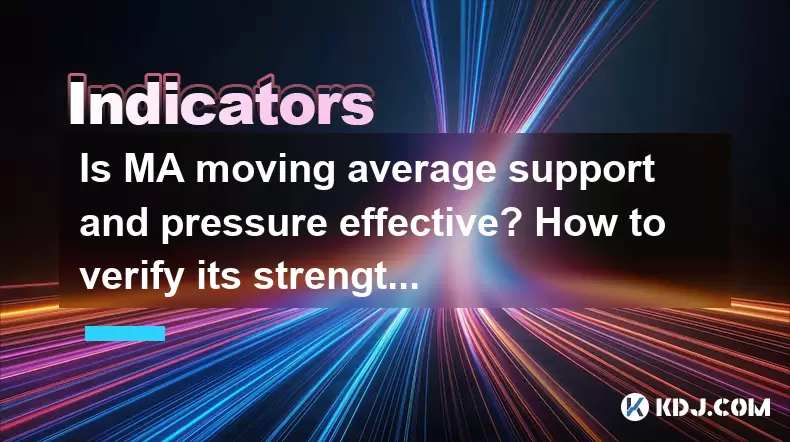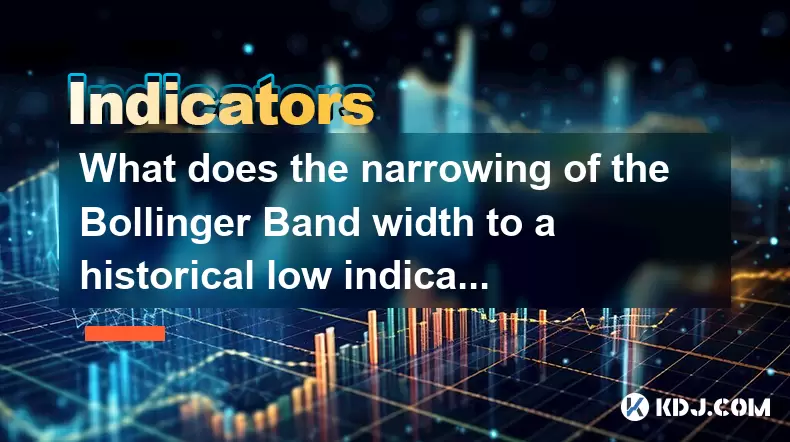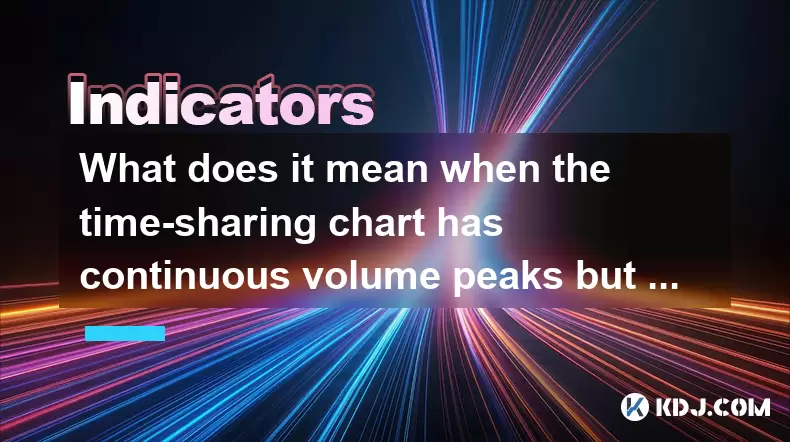-
 Bitcoin
Bitcoin $103,838.1703
5.33% -
 Ethereum
Ethereum $2,364.7328
10.94% -
 Tether USDt
Tether USDt $1.0007
0.03% -
 XRP
XRP $2.0950
9.02% -
 BNB
BNB $634.7170
5.25% -
 Solana
Solana $142.0264
11.70% -
 USDC
USDC $1.0000
0.00% -
 TRON
TRON $0.2728
5.18% -
 Dogecoin
Dogecoin $0.1598
10.80% -
 Cardano
Cardano $0.5655
9.94% -
 Hyperliquid
Hyperliquid $37.8554
11.16% -
 Sui
Sui $2.7196
17.77% -
 Bitcoin Cash
Bitcoin Cash $458.7795
4.67% -
 Chainlink
Chainlink $12.4271
12.53% -
 UNUS SED LEO
UNUS SED LEO $9.0769
0.74% -
 Avalanche
Avalanche $17.7117
12.43% -
 Stellar
Stellar $0.2392
9.83% -
 Toncoin
Toncoin $2.8765
9.58% -
 Shiba Inu
Shiba Inu $0.0...01131
11.69% -
 Litecoin
Litecoin $84.0378
9.79% -
 Hedera
Hedera $0.1456
14.65% -
 Monero
Monero $305.0298
5.16% -
 Ethena USDe
Ethena USDe $1.0006
0.03% -
 Dai
Dai $1.0001
0.02% -
 Polkadot
Polkadot $3.3522
10.31% -
 Bitget Token
Bitget Token $4.0785
3.25% -
 Uniswap
Uniswap $6.7682
13.08% -
 Pepe
Pepe $0.0...09557
13.29% -
 Pi
Pi $0.5253
9.79% -
 Aave
Aave $250.5247
16.65%
Is MA moving average support and pressure effective? How to verify its strength?
Moving averages help smooth out price action in crypto markets, acting as dynamic support and resistance levels for traders to identify trends and make informed decisions.
May 22, 2025 at 04:36 pm

Introduction to Moving Averages
Moving averages (MA) are one of the most popular technical analysis tools used by traders in the cryptocurrency market. They help smooth out price action by filtering out the noise from random short-term fluctuations, making it easier to identify the underlying trend. Two common types of moving averages are the Simple Moving Average (SMA) and the Exponential Moving Average (EMA). The SMA calculates the average price over a specified period, while the EMA gives more weight to recent prices, making it more responsive to new information.
Understanding Support and Resistance with Moving Averages
In the context of cryptocurrencies, moving averages can act as dynamic support and resistance levels. When the price of a cryptocurrency approaches a moving average, it often reacts to it, either bouncing off it (acting as support) or breaking through it (acting as resistance). For instance, if the price of Bitcoin is trending upwards and approaches its 50-day SMA, this moving average can serve as a support level, potentially preventing the price from falling further. Conversely, if the price is trending downwards and approaches the same SMA, it might act as a resistance level, hindering the price from rising.
Evaluating the Effectiveness of MA as Support and Resistance
The effectiveness of moving averages as support and resistance can vary depending on several factors, including the time frame used and the specific cryptocurrency in question. Short-term moving averages, like the 10-day or 20-day SMA, tend to be more sensitive to price changes and can be useful for short-term trading strategies. Longer-term moving averages, such as the 50-day or 200-day SMA, are better suited for identifying longer-term trends and can serve as stronger support and resistance levels.
To assess the effectiveness of a moving average as a support or resistance level, traders often look at historical price data to see how frequently the price has reacted to the moving average in the past. For example, if Bitcoin's price has consistently bounced off its 50-day SMA over the past six months, this suggests that the 50-day SMA is a strong support level for Bitcoin.
Verifying the Strength of MA Support and Resistance
Verifying the strength of a moving average as a support or resistance level involves both qualitative and quantitative analysis. Here are some steps to help you verify the strength:
Analyze Historical Price Data: Use charting tools to look at historical price data and see how often the price has respected the moving average. The more instances of the price bouncing off the moving average, the stronger the support or resistance.
Volume Confirmation: Look at trading volume when the price approaches the moving average. If the volume increases as the price bounces off the moving average, it suggests strong support or resistance.
Multiple Time Frame Analysis: Check the moving average on different time frames. If the moving average acts as support or resistance on multiple time frames (e.g., daily, weekly), it is likely to be more robust.
Other Technical Indicators: Use other technical indicators, such as the Relative Strength Index (RSI) or the Moving Average Convergence Divergence (MACD), to confirm the strength of the moving average. For instance, if the RSI shows oversold conditions when the price approaches the moving average, it could indicate strong support.
Market Sentiment: Consider the overall market sentiment. If the broader market is bullish, moving averages may act as stronger support levels, while in a bearish market, they may serve as more significant resistance levels.
Practical Application: Using MA for Trading Decisions
To apply moving averages effectively in trading, follow these steps:
Choose the Right MA: Select the moving average that best suits your trading strategy. For short-term trading, a 10-day or 20-day SMA might be appropriate, while for longer-term trends, a 50-day or 200-day SMA could be more suitable.
Set Up Your Chart: Use a reliable charting platform to plot the moving average on your price chart. Ensure that the moving average is clearly visible and distinguishable from the price line.
Identify Key Levels: Look for instances where the price approaches the moving average. Mark these points on your chart to see if the moving average has historically acted as support or resistance.
Wait for Confirmation: Before making a trading decision, wait for price action to confirm the moving average's role as support or resistance. For example, if the price bounces off the moving average with increased volume, it could be a signal to enter a trade.
Set Stop-Loss and Take-Profit Levels: Once you enter a trade based on the moving average, set appropriate stop-loss and take-profit levels to manage risk. For instance, if you buy Bitcoin as it bounces off the 50-day SMA, you might set a stop-loss just below the SMA and a take-profit at a previous resistance level.
Monitor and Adjust: Continuously monitor the price action and adjust your trading strategy as needed. If the moving average fails to act as support or resistance, it may be time to exit the trade or reassess your strategy.
Real-World Examples of MA Support and Resistance
To illustrate the concept, let's look at a couple of real-world examples from the cryptocurrency market:
Bitcoin and the 200-day SMA: Historically, Bitcoin's price has shown a strong reaction to its 200-day SMA. In 2020, Bitcoin's price repeatedly bounced off this level, indicating strong support. Traders who recognized this pattern could have entered long positions at these points and potentially profited from the subsequent rallies.
Ethereum and the 50-day EMA: Ethereum's price has often respected its 50-day EMA as a resistance level during downtrends. In 2018, Ethereum's price consistently failed to break above the 50-day EMA, suggesting strong resistance. Traders who identified this pattern could have used it to enter short positions or avoid buying until a breakout occurred.
FAQs
Q1: Can moving averages be used effectively in highly volatile markets like cryptocurrencies?
Yes, moving averages can be effective in volatile markets, but traders need to adjust their strategies. In highly volatile markets, shorter-term moving averages may be more useful for capturing quick price movements, while longer-term moving averages can help identify broader trends amidst the noise.
Q2: How do I choose between SMA and EMA for my trading strategy?
The choice between SMA and EMA depends on your trading style. If you prefer a smoother, less reactive indicator, the SMA might be more suitable. If you need a more responsive indicator that reacts quickly to recent price changes, the EMA could be a better choice.
Q3: Are there any risks associated with using moving averages as support and resistance?
Yes, there are risks. Moving averages are lagging indicators, meaning they are based on past prices and may not always predict future price movements accurately. Additionally, false breakouts or breakdowns can occur, leading to potential losses if not managed properly with stop-loss orders.
Q4: How can I combine moving averages with other technical indicators for better results?
Combining moving averages with other technical indicators can enhance your trading strategy. For example, using the RSI to confirm overbought or oversold conditions when the price approaches a moving average can provide additional confirmation. Similarly, the MACD can help identify potential trend changes that might affect the effectiveness of moving averages as support or resistance.
Disclaimer:info@kdj.com
The information provided is not trading advice. kdj.com does not assume any responsibility for any investments made based on the information provided in this article. Cryptocurrencies are highly volatile and it is highly recommended that you invest with caution after thorough research!
If you believe that the content used on this website infringes your copyright, please contact us immediately (info@kdj.com) and we will delete it promptly.
- Bitcoin Scaling Showdown: Lightning Network, Sztorc, and the Future of Payments
- 2025-06-24 04:25:12
- Cathie Wood, ARK Invest, and Circle Shares: A Wild Ride on the Stablecoin Wave
- 2025-06-24 04:25:12
- Download 2025: Live Review Through Martha's Lens
- 2025-06-24 04:32:10
- Turtle Club Joins Kaito Leaderboard: A New Era for Ecosystem Push
- 2025-06-24 04:35:12
- Crypto Penny Coins: Hunting for Monster Gains in 2025
- 2025-06-24 02:45:12
- Ethereum Whale Dips Into Crashing ETH: Smart Move?
- 2025-06-24 02:25:12
Related knowledge

How to interpret that the time-sharing chart shows "volume and price rise together" but the MACD red column shortens?
Jun 24,2025 at 01:08am
Understanding the Concept of 'Volume and Price Rise Together'In cryptocurrency trading, when a time-sharing chart shows that both volume and price rise together, it is typically interpreted as a sign of strong buying pressure. This means more traders are entering long positions, pushing the price higher while increasing the trading volume. This phenomen...

Is it contradictory that the moving average system is arranged in a bullish pattern but the DMI shows a decline in trend strength?
Jun 23,2025 at 11:43pm
Understanding the Moving Average and DMI RelationshipIn cryptocurrency trading, technical analysis plays a crucial role in identifying potential trends and making informed decisions. Two of the most commonly used indicators are the Moving Average (MA) and the Directional Movement Index (DMI). While both tools aim to provide insight into market direction...

How to interpret that the Williams indicator quickly turns back in the overbought area but does not fall below the 50-axis?
Jun 24,2025 at 02:01am
Understanding the Williams %R Indicator in Cryptocurrency TradingThe Williams %R indicator, often referred to as Williams Percent Range, is a momentum oscillator used by traders to identify overbought or oversold conditions in financial markets, including cryptocurrency. It ranges from 0 to -100, where values above -20 are considered overbought and thos...

What is the significance of the gap formed by the gap opening not being filled within five days?
Jun 23,2025 at 09:42pm
Understanding Gaps in Cryptocurrency TradingIn the world of cryptocurrency trading, a gap refers to a situation where the price of an asset jumps from one level to another without any trading activity occurring between those two levels. This often happens over weekends or holidays when the market is closed, and significant news or events occur that impa...

What does the narrowing of the Bollinger Band width to a historical low indicate?
Jun 24,2025 at 02:35am
Understanding Bollinger Bands and Their Role in Technical AnalysisBollinger Bands, developed by John Bollinger in the 1980s, are a popular technical analysis tool used to measure market volatility. They consist of three lines: a simple moving average (SMA) in the center, typically over a 20-period setting, and two outer bands that are set at a standard ...

What does it mean when the time-sharing chart has continuous volume peaks but the price fluctuation is not large?
Jun 24,2025 at 03:49am
Understanding the Time-Sharing Chart in Cryptocurrency TradingIn cryptocurrency trading, time-sharing charts are crucial tools that help traders monitor real-time price movements and volume activity. These charts display data within specific time intervals—such as 1-minute, 5-minute, or 15-minute windows—and allow for granular analysis of market behavio...

How to interpret that the time-sharing chart shows "volume and price rise together" but the MACD red column shortens?
Jun 24,2025 at 01:08am
Understanding the Concept of 'Volume and Price Rise Together'In cryptocurrency trading, when a time-sharing chart shows that both volume and price rise together, it is typically interpreted as a sign of strong buying pressure. This means more traders are entering long positions, pushing the price higher while increasing the trading volume. This phenomen...

Is it contradictory that the moving average system is arranged in a bullish pattern but the DMI shows a decline in trend strength?
Jun 23,2025 at 11:43pm
Understanding the Moving Average and DMI RelationshipIn cryptocurrency trading, technical analysis plays a crucial role in identifying potential trends and making informed decisions. Two of the most commonly used indicators are the Moving Average (MA) and the Directional Movement Index (DMI). While both tools aim to provide insight into market direction...

How to interpret that the Williams indicator quickly turns back in the overbought area but does not fall below the 50-axis?
Jun 24,2025 at 02:01am
Understanding the Williams %R Indicator in Cryptocurrency TradingThe Williams %R indicator, often referred to as Williams Percent Range, is a momentum oscillator used by traders to identify overbought or oversold conditions in financial markets, including cryptocurrency. It ranges from 0 to -100, where values above -20 are considered overbought and thos...

What is the significance of the gap formed by the gap opening not being filled within five days?
Jun 23,2025 at 09:42pm
Understanding Gaps in Cryptocurrency TradingIn the world of cryptocurrency trading, a gap refers to a situation where the price of an asset jumps from one level to another without any trading activity occurring between those two levels. This often happens over weekends or holidays when the market is closed, and significant news or events occur that impa...

What does the narrowing of the Bollinger Band width to a historical low indicate?
Jun 24,2025 at 02:35am
Understanding Bollinger Bands and Their Role in Technical AnalysisBollinger Bands, developed by John Bollinger in the 1980s, are a popular technical analysis tool used to measure market volatility. They consist of three lines: a simple moving average (SMA) in the center, typically over a 20-period setting, and two outer bands that are set at a standard ...

What does it mean when the time-sharing chart has continuous volume peaks but the price fluctuation is not large?
Jun 24,2025 at 03:49am
Understanding the Time-Sharing Chart in Cryptocurrency TradingIn cryptocurrency trading, time-sharing charts are crucial tools that help traders monitor real-time price movements and volume activity. These charts display data within specific time intervals—such as 1-minute, 5-minute, or 15-minute windows—and allow for granular analysis of market behavio...
See all articles
























































































